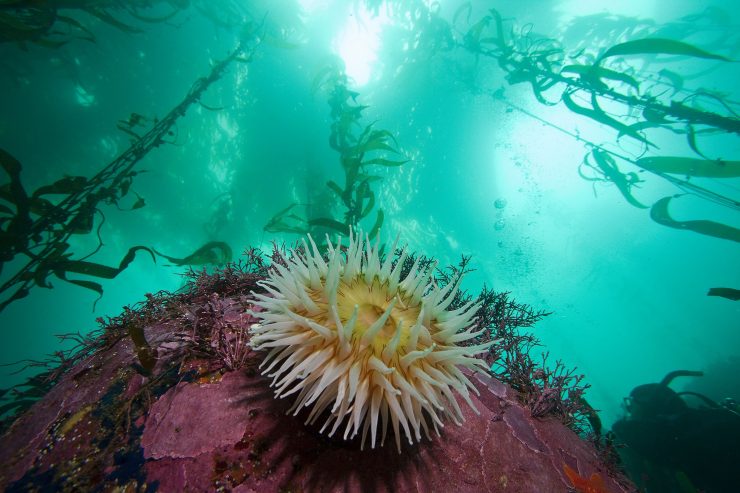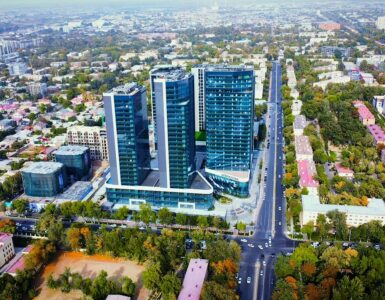After years of U.S. government grants and research, the field of kelp cultivation is approaching a stage of maturity where it is beginning to attract more producers in certain regions as well as capture investors’ attention.
Kelp, which is the biggest subgroup of seaweed found in saltwater, is not categorized as a plant or an animal and is offering potentially higher nutritional value as a meat substitute than a plant-derived product. It’s also a promising alternative to fossil fuels.
Moscow-born professor Sergey Nuzhdin, who has been a professor in the biology department at the University of Southern California since 2007, set up a kelp working group in July 2021 with the goal of connecting researchers at different institutions as well as non-profits. He believed that forming a more cohesive group would make them better equipped for addressing a range of challenges and attracting funding.
“For investors it might be scary to invest into farming or stock development because they will have questions on how to permit your farm, how to monitor it, how you make sure that it is set up for production requested by the refinery industry,” he explains. “When it is fragmented, not consolidated, it’s more difficult to move forward.”
So he started to run monthly ‘kelp cluster’ events, planning to host the eighth event at the end of February. Over 50 people attend each event, including foundations and investors, he noted.
Along with researchers becoming more proactive about engaging investors, the nonprofits and government agencies are also becoming more interested in exploring commercialization of kelp for both biofuels and food production.
There are some signs of progress. The National Oceanic and Atmospheric Administration (NOAA) recently identified offshore aquaculture opportunity zones in the Gulf of Mexico and Southern California that could be used for offshore aquaculture production.
“I think that we will start to see a very big scale-up over the next two to three years, and kelp farming will be the first permitted mariculture activity on a large scale,” Nuzhdin says. “Five years ago, it was a little bit of a dream and now it is coming through.”
Renewed government interest in kelp is certainly one big factor working in researchers’ favor.
“In the 1980s, the American government established the Gas Institute and a program on cultivation and domestication of algae, during the Caribbean crisis,” Nuzhdin recalls. “But then when prices of gas went dramatically down, they discontinued it. Now they recalled [this] expertise and refocused attention on macroalgae.”
For the U.S. government agencies, the primary interest is kelp use for biofuels and bioplastics production, even though globally most kelps are cultivated for food purposes.
ARPA-E, which is a branch of the Department of Energy, has been proactive in investing in farm design, monitoring of farms, understanding where the nutrients are located, and how kelps are grown in order to produce biofuel crops.
“With a total investment of $70 million, they tried to create a whole ecosystem of different researchers gaining expertise in different components of farming, production, permitting and monitoring,” Nuzhdin says.
Nuzhdin’s research lab receives funding primarily from ARPA-E as well as NOAA and other resources. They’ve received a total of $6 million in total funding over the last two years and are due to receive another two million through 2024.
With this funding and backing from other donors and foundations such as Ocean Protection Council, NSF, USDA and USC, the team was able to produce prototypes of sporeless kelps that are not able to reproduce.
The idea is to later sell these seeds to farmers.
“Permitting agencies can permit cultivation of those seeds, but farmers will have to keep on buying them from us because there will be no permits for large farms that will be associated with reproductive kelps, I am reasonably certain,” Nuzhdin says. “The farmers will benefit from a higher profit margin, exactly like they do in agriculture.”
Some states have been more successful than others in fostering a favorable ecosystem for seaweed and mariculture farming.
Alaska, for example, has seen a sharp increase in kelp farm applications in recent years due to coordinated efforts of non-profit organizations and government agencies as well as the state population’s high receptivity and participation rates in the seafood industry.
“In Alaska and the North East, the kelp farms are growing explosively,” Nuzhdin notes. “It will be exactly the same in California when the regulatory environment becomes more permissive.”
Julie Decker, Executive Director at Alaska Fisheries Development Foundation, says their state saw a big jump from having its first harvest of seaweed off a kelp farm five years ago totalling around 15,000 pounds to over 400,000 pounds produced last year.
“And this year, it’s likely going to be in the five to 600,000 pounds range,” she notes.
With many new players now entering the field, Nuzhdin says his team has enjoyed “multimillion support to learn how to do it right,” which allowed them a head start of four to five years.
“My position is very clear: I’m a breeder, I’m a genomicist. I’m producing better crops,” he says. “So when those kelp farms are ready in two to three years, I will be ready with my seeds.”






Add comment